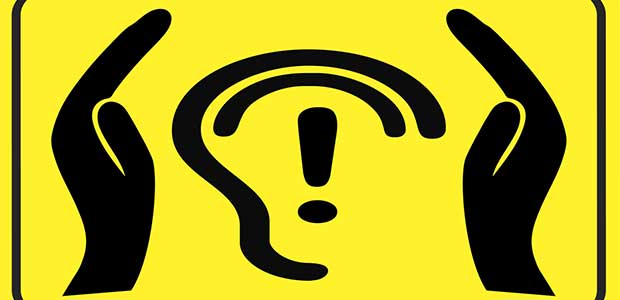
Listen Up—Kicking Workplace Noise Monitoring Up a Notch
According to OSHA, each year 22 million employees are exposed to hazardous noises at work, making hearing loss the most common work-related injury. It’s time to understand, and consider, the role technology can play in workplace noise monitoring.
- By Justin Stewart
- Sep 01, 2019
According to OSHA, each year 22 million employees are exposed to hazardous noises at work, making hearing loss the most common work-related injury. It’s time to understand, and consider, the role technology can play in workplace noise monitoring.
Setting Standards in Place
The goal of all employers should be for their employees to leave work in the same condition as they began—healthy and safe. When an organization displays its dedication to employee safety through responsible practices and initiatives, it results in increased productivity and employee morale, as well as decreased insurance costs.
In 2018, ISO 45001 was established as the new standard for occupational health and safety (OHS) to reduce the burden of regulation and prevent workplace injuries and fatalities, providing a framework to improve employee safety and create safer working conditions. It is an international standard that specifies requirements for an OHS management system, with guidance for its use and to enable an organization to proactively improve its OHS performance in preventing injury and ill health. ISO 45001 is intended to be applicable to any organization regardless of its size, type, or nature, and all of its requirements are intended to be easily integrated into an organization’s own management processes.
Hazards and risks in the workplace need to be identified and, more importantly, eliminated or reduced to appropriate levels. ISO 45001 highlights both noise and dust exposure issues, as well as the value of workplace monitoring. Research shows that stronger occupational regulation of noise leads to safer sound levels, which results in safer employees.
Impacts of Occupational Hearing Loss
NIOSH recommends that workers are not exposed to noise at a level that amounts to more than 85 decibels (dBA) over eight continuous hours. An estimated 24 percent of hearing loss in the United States has been attributed to workplace exposure, according to the Centers for Disease Control and Prevention.
Although noise-induced hearing loss is one of the most common occupational illnesses, it is often ignored because there are no visible effects. It usually develops over a long period of time and, except in very rare cases, there is no pain. What does occur is a progressive loss of communication, socialization, and responsiveness to the environment. In its early stages, it affects the ability to understand or differentiate speech. As it progresses to the lower frequencies, it begins to affect the ability to hear sounds in general.
The primary effects of workplace noise exposure include noise-induced temporary threshold shift, noise-induced permanent threshold shift, acoustic trauma, and tinnitus. A noise-induced temporary threshold shift is a short-term decrease in hearing sensitivity that returns to the pre-exposed level in a matter of hours or days, assuming there is not continued exposure to excessive noise.
If noise exposure continues, the shift can become a noise-induced permanent threshold shift, which is a decrease in hearing sensitivity that is not expected to improve over time. If workers experience standard threshold shifts, employers are required to fit or refit the workers with hearing protectors, train them in the use of the hearing protectors, and require the workers to use them.
The effects of excessive noise exposure are made worse when workers have extended shifts (longer than eight hours). With extended shifts, the duration of the noise exposure is longer and the amount of time between shifts is shorter. This means that the ears have less time to recover between noisy shifts and damage can more quickly become permanent.
Tinnitus, or “ringing in the ears,” can occur after long-term exposure to high sound levels, or sometimes from short-term exposure to very high sound levels. Regardless of the cause, this condition is a disturbance produced by the inner ear and interpreted by the brain as sound. Individuals with tinnitus describe it as a hum, buzz, roar, ring, or whistle, which can be short term or permanent.
Hazardous levels of noise exposure should be a priority for employers to monitor to avoid implications for both themselves and their employees.
Measuring noise levels and noise exposure is the most important part of a workplace hearing conservation and noise control program. It helps identify locations where there are noise problems, employees who may be affected, and where additional noise measurements need to be made.
Changing the Workplace with Technology
To assess the risk of workplace noise, a variety of monitoring solutions may be installed and utilized. Noise dosimeters are ideal for personal exposure monitoring and a mobile workforce, while sound level meters can be used to check areas or an individual’s exposure for a stationary task.
Noise exposures are monitored using established technology and are the responsibility of occupational hygienists, a health and safety manager, or another trained expert. Data collection provides concrete information highlighting key paths for change and can help the organization to achieve compliance with government standards and protect its workforce effectively.
To increase the success of workplace noise monitoring, workers must understand its importance and the long-term, negative health effects that could result. If noise monitoring technology is used, quantitative data can be captured and any risks or potential areas of concern can be identified.
This article originally appeared in the September 2019 issue of Occupational Health & Safety.